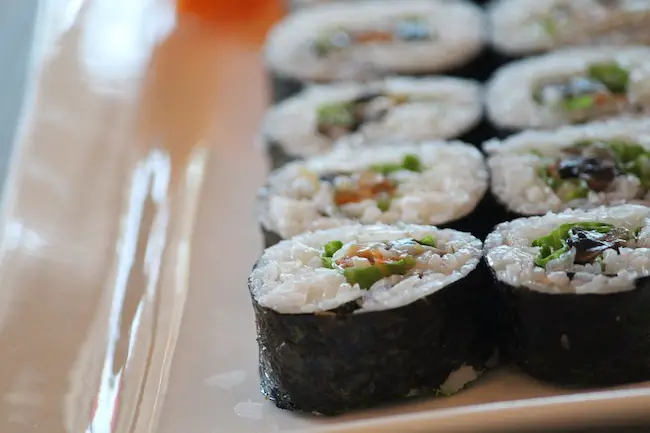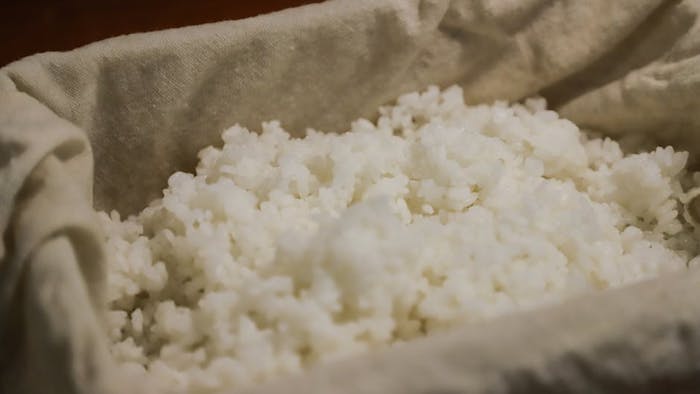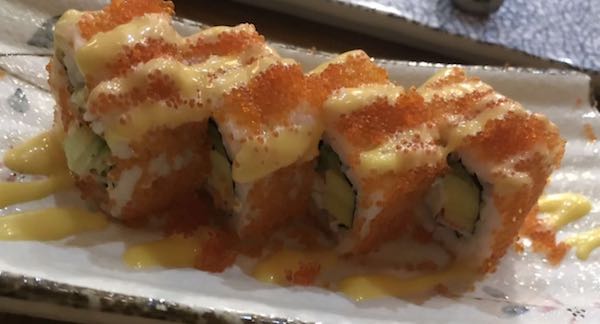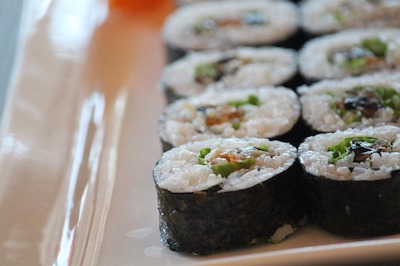We are reader supported. When you purchase through links on our site, we may earn an affiliate commission. Also, as an Amazon affiliate, we earn from qualifying purchases.

Many people consider sushi to be a meal with raw fish – mostly tuna or salmon. But, what does the perfect, traditional sushi look like? Is that the combination of raw fish and rice or is it enough if you have just a perfect slice of fresh fish?
Actually, the key ingredient in sushi is – rice! Sushi, when translated, literally means rice vinegar – “su” stands for vinegar, while “she” for rice. Even if the sushi doesn’t contain fish, all but is all rice, it would still be sushi. So, when you say sushi, it’s the rice that counts, not the fish.
You probably aren’t aware of all the details regarding the rice – its importance in sushi rolls; which rice to use and general influence of rice in Japanese culture. But don’t worry, go through our article and you will not be confused about sushi and rice anymore.
How important is rice in sushi?
If you ask any authentic Japanese sushi chef, they will say that the rice is even more important than the fish. Because sushi is not a fish dish, as most people think. Sushi is a rice dish; it’s the main ingredient, and only after rice comes the fish.
Some sushi chefs state that sushi is 70% rice and 30% fish – and that number goes up to 90% for rice. So, to indicate the obvious – yes, sushi needs to have rice. Otherwise, it is not sushi anymore; it’s sashimi.
To find out more about the different sushi types – check out our article about the difference between various sushi rolls.
The rice is what makes sushi excellent— the more delicious the rice, the better. Quality of rice and the cooking process makes a huge difference for any real sushi lover. It’s simple – if the rice isn’t good, then the sushi isn’t good too.
This might sound shocking to you – given a choice we have over the toppings and different ingredients in sushi, especially in Western sushi restaurants. And you cannot choose between different variations of rice. It then seems logical that fish is the main character in sushi rolls.
Yet, anything else that is included in sushi like the fish and toppings is just there to complement the rice. And if you can’t eat the rice on its own, you can’t even eat proper sushi. Because the rice in sushi adds texture and flavor to any fish or topping – it also complements really well with both fattier and lighter fish.
This emphasis on rice maybe sounds weird to Western cultures, but in fact, rice is the essence of Japanese culture. To the Japanese, rice is beyond that just food; it is the meal that has been cultivated for over 2 000 years.
The whole six-month process of rice cultivation is believed to be the origination point of Japanese culture. When you consider it that way, it is no longer strange that rice is a crucial part of sushi.
What type of rice is best for sushi

You might think that rice is rice, and whatever you use will be good for making sushi. But because now you know how important the rice in sushi is, we will reveal which type of rice is best for it and why.
Let’s hop on to rice details. There’s a massive difference between kinds of rice just like it’s an enormous contrast between for example fresh and stale bread.
There’s the same division between freshly made rice held at body temperature, and rice made hours ago that has already cooled down. The rice for sushi needs to have the right temperature, texture and perfect amount of vinegar, salt and sugar.
Moreover, some sushi chefs create their own blend of rice by mixing it from many different regions. Others use meshi – ancient Japanese short grain rice. There are also different methods of cooking – while some cook by hand others use an electric rice cooker.
To learn more about the making of sushi rice (with a lot of steps) read our article where we explained it in detail.
Preparing sushi rice requires attention to spices and the way of cooking, but what is equally important is the choice of rice. So, which rice to use when preparing and eating sushi? You need to use – sushi rice.
Sushi rice is made by cooking a bowl of Japanese short grain rice like this, called
Sushi rice has been cultured for over 2,00 years, and it has a significant influence on overall Japanese culture. This Japanese rice is a “short-grain” rice with much more of starch amylopectin – which makes rice stickier.
This stickiness is unique and makes the rice different than any rice cultivated outside Asia, let alone any Western fast cooked rice. The humidity is what allows the rice to be eaten with chopsticks as well as it can easily be shaped in sushi rolls. This type of rice is also used to make sake, rice flour, and rice wine vinegar.
The favorite sushi rice in Japan is called Koshihikari – it is known by the condensed grain that makes firmer and denser texture, making the sushi roll-shaped perfectly. Koshihikari contains aromatic flavor that makes the rice creamy when you put it in the mouth. This is the magical ingredient in traditional Japanese sushi.
The role of rice in Japanese culture
As we already stated, the cultivation of rice is something that has defined Japanese culture from the start. We will now explain why that is and how did the rice influence a whole culture.
The process of rice cultivation used to involve the entire village – and that created a real bond between people. a few thousand years ago, the cultivation of rice was a tough task and couldn’t be accomplished by only one person doing it.
Since rice cultivation is a long process, the families in villages started collaborating, planting the rice on the same day and at the same time. This later developed in the importance of teamwork that is deeply embodied in the Japanese culture.
Rice has had religious and monetary significance in Japan. The religion Shinto is strongly linked with rice cultivation, and rice was even used as the currency of Japan. In history, rice was equally important like gold is today and the amount of rice owned determined the amount of wealth.
Moreover, the influence of rice is seen in the language too. The name for cooked rice is “gohan” which means cooked rice or even meal, depending on the context. The term “gohan” is further developed in different names for different times of meals – breakfast “asagohan”, lunch “hirugohan” and dinner “bangohan”. This is a real example of how influential rice in a Japanese diet is.
As you can see rice is an essential part of the history, religion, and economy of Japanese culture. That’s why there is no more doubt about the importance of rice in sushi.
Related Questions
What is then sushi without rice?
Sushi without rice is called sashimi. Sashimi can be described as a delicacy of thinly sliced fish and is eaten plain without any other ingredients except soy sauce. Soy sauce enhances the flavor of the fish. For more info: Difference Between Nigiri, Sashimi, Sushi Roll, Hand Roll, Gunkan Sushi
Some of the most popular sashimi varieties include salmon, tuna, yellowtail, and squid.
Can I make sushi with some different rice?
Well, you can, but that won’t be a proper sushi roll. If you do not use the correct rice or even prepare it in the appropriate way – you won’t eat sushi.
You can change anything in the recipe – from what you put on it, the shapes or flavors you use – but rice is the key, and it cannot be changed. Failing to use the typical Japanese rice, prepared in a distinctive way will just not get you the result you want.
But, if you want to experiment, you can use medium grain rice or even brown rice if you know how to cook it properly. Still, you need to mix it with vinegar, salt, and sugar (click to see how to season it).
Since you can nowadays easily buy Japanese rice for your sushi, we recommend that you use it for your sushi and any other regular dishes with rice. There is no real reason to substitute Japanese rice with different rice types.
Resolving the mystery – where do you put rice in sushi – on the inside or outside?
Authentic Japanese sushi rolls don’t have rice on the outside and then the seaweed. This invention happened in the U.S., and now it even shows in traditional Japanese sushi places.

This was an invention of chefs in the U.S. that were trying to please the wishes of its customers. Many people were put off by the “black wrapper” or seaweed and even wanted to remove it before eating. This way the rice comes first and nori is on the inside. But traditional sushi has rice on the inside, while nori is outside.
Related Article: Difference Between Japanese Sushi And American Sushi

